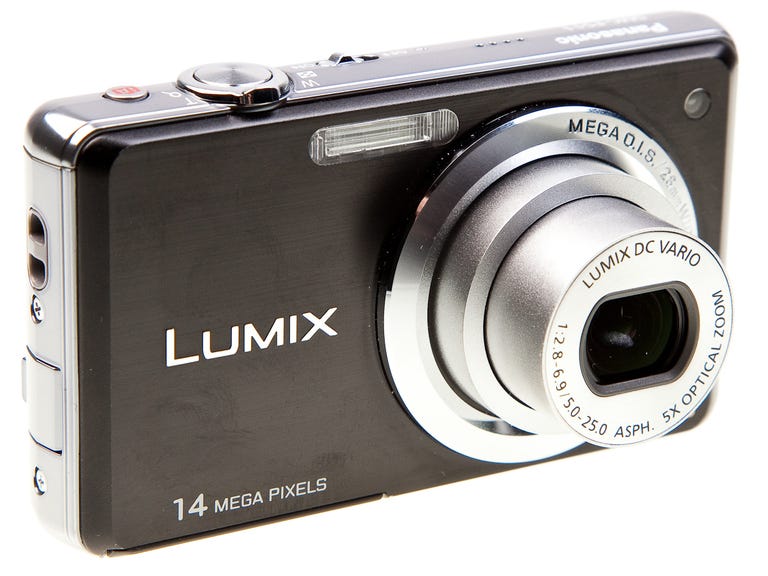 Why You Can Trust CNET
Why You Can Trust CNET Panasonic Lumix DMC-FS11 review: Panasonic Lumix DMC-FS11
Panasonic's compact cameras are usually solidly built and well designed, and the 14.1-megapixel Lumix DMC-FS11 is no exception. While it's not the most versatile snapper in the world -- its pictures suffer from noise in low light -- it is highly pocketable, very simple to use and pretty affordable too
Panasonic has real form in making solidly built, pocket-friendly compact cameras. The 14.1-megapixel Lumix DMC-FS11 is yet another, joining the near-identical 12.1-megapixel Lumix DMC-FS10 in Panasonic's camera line-up. Packing a 28mm wide-angle lens with a 5x optical zoom, and shooting 720p video, the FS11 is available for around £150.
The Good
The Bad
The Bottom Line
Boxes ticked
In terms of looks, specs and affordable pricing, the FS11 ticks all the compact-camera boxes. It's small enough to effortlessly slip into a pocket, has plenty of automatic settings for point-and-shoot purposes, and it's very easy to use.
Clad in black, pink, blue or a silver brushed-metal effect, the FS11 looks respectable, although it probably won't turn many heads. Even Panasonic's lowliest Lumix benefits from rock-solid build quality, and the FS11 is no exception: the metal frame should stand up to the rough and tumble of being transported in a bag, as well as the occasional knock.
The camera couldn't be simpler to use. The power switch is on the top, with the shutter release, zoom control and 'intelligent auto' button. The latter takes care of working out the lighting and focus conditions, and setting the camera for you.

Novices may never need any of the other controls, but the buttons on the back are well spaced out and straightforward. Basic controls are accessed by four buttons arranged in a circle around a central 'OK' button. At the bottom right is a quick-menu button, which calls up the shooting options that you can change, including ISO speed. Next to the buttons is a large and clear 69mm (2.7-inch) screen.
The FS11 may be pocketable, but we had a few minor issues with its design. For example, the raised bezel around the screen makes it look larger than it actually is. Also, you toggle between snapping and playback with a switch, rather than a button. The thinking behind this is that you can power up the camera straight into playback mode, so that your pictures are there to show off as soon as you turn it on, without the lens popping out. We found, however, that we were most likely to turn the camera on to grab a quick snapshot rather than look at pictures. If the switch is in the wrong position, it wastes an extra second or two, potentially meaning you miss the moment.
Noise annoys
As with most compact cameras, the biggest problem with the FS11 is that it doesn't allow for much beyond automatic point-and-shoot snapping, as there's very little in the way of manual controls.
In low-light situations, the FS11 delivers decent image quality, but it's rather slow to focus in the dark. The flash is an all-or-nothing affair too, so, in most poorly lit environments, you have the choice of a flash that's slightly too bright or no flash at all. This can lead to pictures that are too dark or -- worse -- speckled with noise as a result of the camera's attempt to make the picture lighter by boosting the ISO speed. At around ISO 400, images begin to appear gritty, and they are speckled with red and green noise by ISO 800.
Exposures are decent, with minimal purple fringing. Highlights tend to blow out, meaning that bright areas lose detail, but this is only a serious problem when bright areas are next to darker ones, like a light sky against a darker skyline.
Conclusion
The Panasonic Lumix DMC-FS11 couldn't be easier to use for beginners and casual snappers. It's at its best in everyday point-and-shoot situations, but begins to struggle as the light dims. Ultimately, its simplicity and lack of manual controls limit its appeal.
Edited by Charles Kloet


